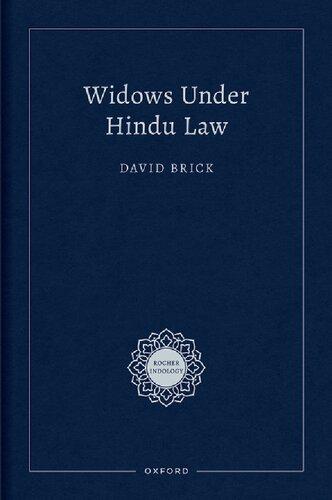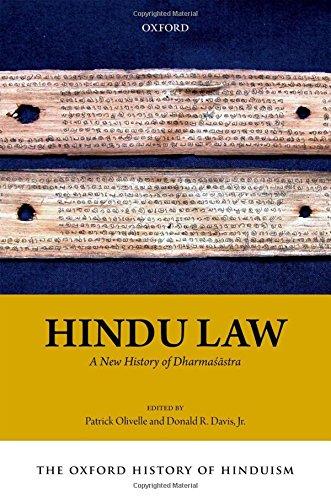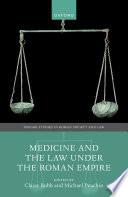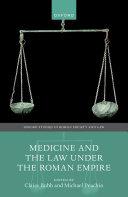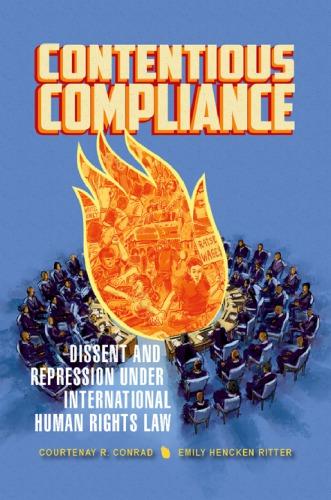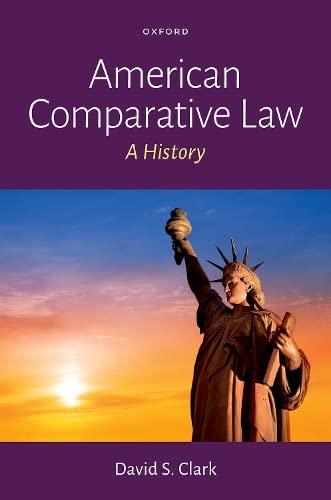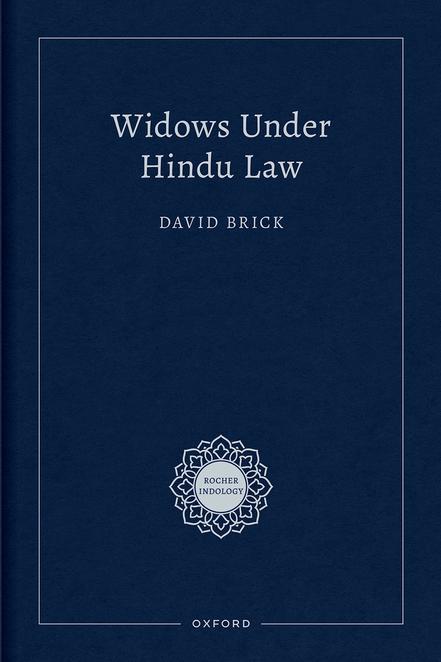Widows Under Hindu Law
DAVID BRICK
Oxford University Press is a department of the University of Oxford. It furthers the University’s objective of excellence in research, scholarship, and education by publishing worldwide. Oxford is a registered trade mark of Oxford University Press in the UK and certain other countries.
Published in the United States of America by Oxford University Press 198 Madison Avenue, New York, NY 10016, United States of America.
© Oxford University Press 2023
Some rights reserved. No part of this publication may be reproduced, stored in a retrieval system, or transmitted, in any form or by any means, for commercial purposes, without the prior permission in writing of Oxford University Press, or as expressly permitted by law, by licence or under terms agreed with the appropriate reprographics rights organization.
Tis is an open access publication, available online and distributed under the terms of a Creative Commons Attribution – Non Commercial – No Derivatives 4.0 International licence (CC BY-NC-ND 4.0), a copy of which is available at http://creativecommons. org/licenses/by-nc-nd/4.0/.
All rights reserved. No part of this publication may be reproduced, stored in a retrieval system, or transmitted, in any form or by any means, without the prior permission in writing of Oxford University Press, or as expressly permitted by law, by license, or under terms agreed with the appropriate reproduction rights organization. Inquiries concerning reproduction outside the scope of the above should be sent to the Rights Department, Oxford University Press, at the address above.
You must not circulate this work in any other form and you must impose this same condition on any acquirer.
Library of Congress Cataloging-in-Publication Data
Names: Brick, David J., author.
Title: Widows under Hindu Law / David Brick.
Description: New York, NY : Oxford University Press, [2023] | Series: Rocher Indology | Includes bibliographical references and index.
Identifers: LCCN 2022044083 (print) | LCCN 2022044084 (ebook) | ISBN 9780197664544 (hardback) | ISBN 9780197664568 (epub)
Subjects: LCSH: Widows (Hindu law)
Classifcation: LCC KNS550 .B75 2023 (print) | LCC KNS550 (ebook) | DDC 346.5401/3082—dc23/eng/20230106
LC record available at https://lccn.loc.gov/2022044083
LC ebook record available at https://lccn.loc.gov/2022044084
DOI: 10.1093/oso/9780197664544.001.0001
1 3 5 7 9 8 6 4 2
Printed by Integrated Books International, United States of America
Preface
My academic interest in widows began with a seminar that I took as part of my graduate coursework. Cynthia Talbot was the instructor, and the topic was historical memory in South Asia with a particular focus on the memory and construction of premodern Indian history during the colonial and later periods. At the time I had already studied Sanskrit for quite a few years and had a burgeoning scholarly focus on classical Hindu law or Dharmaśāstra, as it is called in Sanskrit. Aware of this, Dr. Talbot suggested that I write my term paper on the well-known colonial debate on sati, or widow burning, since it involved a great many Dharmaśāstra texts and ideas. As a place to start, she suggested that I read Lata Mani’s book, Contentious Traditions, which examines this debate in detail and was at the time still fairly new. Tis proved to be an extremely fruitful suggestion, for which I am especially grateful in hindsight.
When I read Mani’s book, I was impressed by her nuanced, empathetic, multifaceted, and generally insightful analysis of the early colonial debate on sati. Even at the time, however, it was apparent to me that her understanding of premodern India and Dharmaśāstra in particular was not very strong, despite its obvious relevance to the subject matter of her book. One simple way to illustrate the extent to which Mani’s book ignores Dharmaśāstra is to point out the startling fact that it nowhere cites or even mentions P. V. Kane’s voluminous and magisterial History of Dharmaśāstra a fve-volume work that has long been the starting place for virtually all serious studies of classical Hindu law, including the present one. It was clear to me as a graduate student—and it is even clearer to me now—that if Mani had read Kane’s work and been more knowledgeable about Dharmaśāstra, her work would have greatly benefted in numerous ways (for specifc cases, see note 9 in the Introduction).
Having said this, I do not see Mani’s unawareness of premodern India as severely vitiating the signifcant contribution of her work; nor do I see a general neglect of Dharmaśāstra sources as by any means unique to her among scholars of colonial South Asia. However, I do see in such neglect of Dharmaśāstra an opportunity for a scholar of the subject to provide crucial
context for those working on colonial South Asia, for it is simply impossible to discern what changed under colonialism without a detailed knowledge of what preceded it. Hence, it is impossible to fully understand the colonial debate on sati, as well as the important colonial debate on widow remarriage, without a detailed knowledge of the Dharmaśāstra tradition and its discussions of these same topics. Tus, my hope is that, by providing a detailed history of widows under Hindu law, this book will be of interest and use not only to classical Indologists but also—perhaps especially—to scholars of colonial South Asia.
As a rather old-fashioned philologist who has dedicated his life to the study of ancient and medieval Indian texts, I generally assume that the audience for my work will be a small one and that my work’s infuence outside of academe will be negligible. However, given the intense controversies around Hindu widows that have arisen in colonial and even modern India, I recognize that this book may have a notably wider audience than I am accustomed to. Indeed, as explained above, my hope is that it will to some degree. Hence, while I realize that authors inevitably have limited control over the ways in which their works are used and interpreted, I feel obligated to lay out my personal feelings about the matters addressed in this book.
It probably goes without saying, but I certainly do not wish to see a revival of anything like the treatment of widows prescribed in Dharmaśāstra sources; nor do I wish to embarrass or defame modern Hindus by drawing attention to the historical reality of certain clearly misogynistic practices that they themselves likely consider to have no place in their religion. My frm belief is that religions, like all human institutions, change and that Hinduism is no exception. Tis book provides just one illustration of this. As such, I consider it a mistake to dismiss sati and the other widow-related practices prescribed in classical Hindu sources as mere customs or cultural practices irrelevant to true Hindu religion, for to do so is to capriciously make classical Hindu sources—or at least those of them that one does not like—irrelevant to genuine Hinduism. At the same time, I also consider it a mistake to regard sati and the other widow-related practices discussed in this book as essential and timeless Hindu institutions, for to do so is not only to privilege scriptural religion over lived religion but also to imagine a unanimity of scriptural voices that simply does not exist and to ignore an array of signifcant historical changes that took place during the premodern period—changes that I try to delineate in this book.
Introduction
When employees of the British East India Company frst became aware of the treatment of widows within high-caste Hindu society, many of them were aghast, for high-caste Hindu widows at the time could ofen be quite young due to the prevalence of child marriages and the general vicissitudes of life before modern medicine, yet they were strictly forbidden from ever remarrying. Beyond this, these widows were also faced with a stark choice between two seemingly grim options. On the one hand, they could live on afer their husbands, but as stigmatized and socially marginalized persons, adopting a mandatory lifestyle of harsh asceticism, according to which they had to keep their heads perpetually shaved, observe a demanding regimen of vows and fasts, and eschew such pleasurable things as festivals, favorful foods, dyed garments, and jewelry. Or, on the other hand, they could kill themselves by ascending their husbands’ funeral pyres in a celebrated act of wifely devotion known since the colonial period as sati. Tis essentially was the choice facing the high-caste Hindu widow as the British encountered her in the eighteenth and early nineteenth centuries; and if contemporaneous sources are to be believed, it may not always have been a real choice for the Hindu widow.1
Given this situation and the nature of British culture and colonial rule, it is unsurprising that various legal issues centered on the fgure of the Hindu widow—meaning specifcally the high-caste Hindu widow—became the subject of considerable public attention and deeply contentious debate during the early to mid-nineteenth century. Moreover, as is widely known, colonial administrators, Christian missionaries, and Hindu intellectuals all played prominent roles in these heated debates. Undoubtedly the most well-known instance of such legalistic contention in colonial India is the early nineteenth-century debate on the traditional Hindu practice of widow
1 See in this regard Rammohan Roy’s criticism of contemporaneous proponents of sati: “[T]he widow should voluntarily quit life, ascending the faming pile of her husband. But, on the contrary, you frst bind down the widow along with the corpse of her husband and then heap over her such a quantity of wood that she cannot rise” (Ghose 1901, 135).
Widows Under Hindu Law. David Brick, Oxford University Press. © Oxford University Press 2023.
DOI: 10.1093/oso/9780197664544.003.0001
self-immolation, or sati, as it is commonly called—a debate involving a fascinating array of legal arguments both for and against the practice that culminated in the prohibition of sati throughout most of British India in 1829.2 Te most celebrated participant in this debate is without doubt the enormously infuential Hindu reformer Rammohan Roy. Another wellknown instance of legal contention regarding widows from the colonial period is the mid-nineteenth-century debate on the right of Hindu widows to remarry—widow remarriage having long been prohibited among high-caste Hindus throughout essentially all of South Asia.3 In this case, the reformminded Bengali Sanskrit scholar Ishvarchandra Vidyasagar led a spirited campaign in favor of Hindu widow remarriage, both as a legal right and as a praiseworthy practice fully sanctioned by recognized Hindu scriptures; and this campaign played a major role in the passage of the Hindu Widows’ Remarriage Act of 1856, which granted all Hindu widows in British India the right to remarry.4
Te work of modern scholars (Bandyopadhyay 1995; Hatcher 1996; Mani 1998) has shed considerable light on these colonial debates around widows, as well as their legacies in modern India, interrogating the aims and motives of the various parties involved. Tese scholars have, for instance, shown how the pitiable fgure of the Hindu widow was used to illustrate the purportedly backward nature of Indian culture and, thereby, justify British colonial rule. Moreover, they have crucially revealed how “the generation of law from brahmanic scriptures extended a more restrictive high-caste law to women to whom it had not previously applied” (Mani 1998, 38) and how the work of early Indologists was complicit in this (R. Rocher 2010). Despite this important work, however, scholars have managed to shed little light on a related set of important historical questions, namely, when, where, and why did the salient social practices governing the lives of high-caste Hindu widows during the eighteenth and nineteenth centuries frst arise and become so widespread throughout South Asia. Indeed, when it comes to answering this set of questions, we are still very much in the dark, being dependent upon the broad and loosely substantiated conjectures of past generations of scholars.5
2 On this, see Mani (1998) and Fisch (2006, 364–438).
3 See Chapter 1.
4 For a modern English translation of Vidyasagar’s writings in favor of Hindu widow remarriage and a study thereof, see Hatcher (2012).
5 For examples of such conjectures, one may consult the chapters on widows in Altekar ([1959] 1989, 135–95) and Kane (1962, 2:583–636). Although these authors’ statements about the treatment and status of widows in classical India are largely accurate, their discussions of the topic are necessarily quite cursory, given the ambitious scope of their works, and, thus, fail to delineate important
Nevertheless, it would seem that premodern India provides us with a more than ample set of sources to answer these questions. Tese sources are the abundant and voluminous works of the pan-Indian tradition of classical Hindu law known as Dharmaśāstra—a tradition spanning more than two millennia of Indian history, from roughly the third century BCE to the eighteenth century CE, and addressing in detail virtually every aspect of social practice relevant to Brahmanical Hinduism. Hence, it is fair to say that, when read critically and historically, works of Dharmaśāstra provide a long and detailed record of the prevailing legal and social norms of high-caste Hindu society, including those pertaining to widows.
Tis book is an attempt to construct the frst exhaustive history of widows under Hindu law, that is, a history of how widows are presented and treated in Dharmaśāstra sources. Te reasons for writing such a history may not be obvious to readers and, therefore, warrant some explanation before proceeding. First, I will explain why widows in early India are or should be a topic of interest to scholars of South Asia, both modern and premodern. Ten I will explain why Dharmaśāstra literature constitutes the best available lens for studying such women and constructing a large-scale history of them.
Although the most famous examples of legal debate concerning Hindu widows come from the colonial period, it is by no means the case that such debates begin in the colonial period. It is simply that ancient and medieval debates on widows in South Asia remain largely unknown, even to many classical Indologists. Despite the limited attention that they have received, however, debates concerned with various aspects of the legal status and treatment of widows abound in works of Dharmaśāstra, particularly in Dharmaśāstra commentaries. For instance, Dharmaśāstra literature attests to considerable controversy regarding the practice of niyoga, that is, the ancient Brahmanical version of levirate, whereby a man would beget a son for his sonless kinsman upon that kinsman’s widow. It also contains record of a debate on the validity of sati as a customary practice—a debate with signifcant, but unnoticed echoes in the much more famous colonial debate on the same topic. Tus, it is clear that the Hindu widow was the subject of deep and multifaceted legal contention during precolonial periods as much as the colonial one.
shifs in Brahmanical opinion. Mitra (1881) provides probably the most extensive discussion of widows under Hindu law. However, his work is now badly outdated and misleading in places, such as when he (1881, 104) asserts that the practice of sati was certainly known during the Vedic period and distinctly referred to in certain Vedic passages.
Te reason that widows aroused such controversy in premodern South Asia likely stems from orthodox Brahmanical culture’s strong emphasis on the control—especially the sexual control—of the women within its communities (probably as a marker of high social standing6). Troughout Indian history, the institution of marriage constituted the primary means by which such control was exercised; and, among the various social roles that a woman might assume in premodern India, Brahmanical culture was clearly most comfortable with that of wife. Tus, one can discern rather obvious eforts made by authors within the Dharmaśāstra tradition to strengthen and extend the institution of marriage, for example, by denying the possibility of divorce and stressing the importance of marrying girls prior to their frst menstruation.7 However, the circumstances of real life in ancient India—no diferent than today—would have meant that women frequently outlived their husbands, especially since they would have generally been much younger than them.8 Hence, one can rather safely assume that widowed women would have been common in classical India. In other words, there would have been at the time a class of adult women outside of the controlling bonds of marriage. And it is easy to see how these women would have been deeply and uniquely problematic from the perspective of orthodox Brahmanical men. For this reason, attention to the treatment of widows under Hindu law promises to provide crucial insights into dominant male views of women in classical India and, importantly, into how these views changed over time. In comparison with widows, wives and prepubescent girls—the only other types of women recognized as socially respectable— are unproblematic within Dharmaśāstra. Hence, the treatment of them in Dharmaśāstra texts is relatively consistent and uncontroversial. It is primarily only when confronted with the inescapable fact of sexually mature women within their communities who are outside of the controlling bonds of marriage—the fact of widows—that Brahmin jurists are faced with a serious problem. And how they choose to deal with this problem reveals a great deal about their underlying views of women.
6 On this, see the concluding section of Chapter 1.
7 On divorce in classical Hindu law, see Kane (1962, 2:619–23) and Lariviere (1991). For texts stressing the importance of marrying a girl prior to her frst menstruation, see GDh 18.21–22, VaDh 17.70, and YDh 1.64. For a discussion of the appropriate age of marriage for girls in early India, see Jamison (1996, 237–40) and Kane (1962, 2:439–47).
8 See, e.g., MDh 9.94: “A man thirty years in age should marry a charming girl twelve years in age” (triṃśadvarṣo vahet kanyāṃ hṛdyāṃ dvādaśavārṣikīm |).
Furthermore, Dharmaśāstra texts comprise a uniquely well-suited set of sources upon which to construct a large-scale history of widows in ancient and medieval South Asia. Te reasons for this have already been alluded to. To begin with, works of Dharmaśāstra provide far more abundant and detailed evidence about the status and treatment of widows than any other set of classical Indian sources. Tey are also the products of a remarkably coherent, pan-Indian tradition of legal thought that remained unbroken, although it certainly evolved, over two millennia (c. 300 BCE–1800 CE). Consequently, a history of widows in Dharmaśāstra has the advantage of being simultaneously bounded by a discrete genre of Sanskrit texts and yet uniquely full in its detail, long in its duration, and broad in its geographic scope. Moreover, since traditional Dharmaśāstric notions and the interpretation of Dharmaśāstra texts played a central role in important colonial debates about Hindu widows, a detailed examination of classical Dharmaśāstra discussions of widows will provide useful context for understanding these debates.9
However, despite the unparalleled amount of information about widows in early India that Dharmaśāstra sources provide, a history of widows based upon them is necessarily limited in two crucial ways that must be explicitly acknowledged at the outset. Te frst limitation of such a history is that it will not be a history of Indian widows in general or even Hindu widows. Instead, it must be specifcally a history of Brahmin widows and, to some extent, other high-caste widows whose families observed or aspired to observe Brahmanical norms. Te reason for this limitation is simply that, with only a few late exceptions,10 the Dharmaśāstra tradition shows remarkably little concern with how members of the lower castes conducted their private lives. Indeed, ordinarily the authors of Dharmaśāstra texts do not even intend for their rules concerning widows to apply to low-caste women. Tus, although
9 A more thorough knowledge of Dharmaśāstra, for instance, would have improved Lata Mani’s (1998) otherwise excellent analysis of the colonial debate on sati. In her work, for example, Mani (1998, 69–70) notes that Hindu elites in nineteenth-century Bengal held the Veda to be of greater authority than Smṛti, and Smṛti to be of greater authority than custom, but she is seemingly unaware that this very same position had long been established within Dharmaśāstra. As a result, she implausibly sees in this ranking of sources of authority the infuence of specifcally British colonial ideas. Moreover, had she known more about Dharmaśāstra, she would likely not have imagined traditional pundits to have a “lack of concern about textual contradictions” (37), but instead have been aware that the harmonizing of seemingly contradictory scriptures had for more than a thousand years been the major goal of Dharmaśāstra commentators. Beyond this, she may also have recognized that many specifc details of the colonial debate on sati go back to much earlier Dharmaśāstra sources, such as the rule that Brahmin widows can only perform sati on the same funeral pyre as their husbands (Mani 1998, 19, 35)—a rule frst proposed in the twelfh-century Mitākṣara as a way to harmonize certain scriptures (see Chapter 4).
10 On these, see Vajpeyi (2010).
it would be interesting to know about the lives of such women in classical India, the available evidence sadly makes this efectively impossible.
Te second limitation of a history of widows based upon Dharmaśāstra texts is that it will be a history of how elite men believed women should act and be treated, not a history of what women themselves believed or how they actually acted and were treated. Te reason for this is the prescriptive nature of Dharmaśāstra literature, like all legal literature, combined with the fact that all known Dharmaśāstra authors were either Brahmin men or, much more rarely, Kṣatriya men. Tus, unfortunately, the marginality of women, the absence of their perspectives, and the lack of recognition of their agency, which Mani (1998, 1, 26–28, 31–32, etc.) rightly decries in the case of the colonial debate on sati, are all equally present in Dharmaśāstric treatments of widows. Te extent to which people in premodern South Asia actually followed the dictates of Dharmaśāstra works and, thus, the extent to which we can reliably reconstruct historical social practice from them are matters of long and contentious debate among scholars of Hindu law. I will address these issues below. But there can be no doubt that, in general, Dharmaśāstra works express their authors’ genuine opinions about how people—mainly high-caste people and especially Brahmins—should act. Hence, a history of widows under Hindu law is by nature more a history of elite male ideology than a history of social practice, although one might reasonably imagine that these two things bear at least some relation to one another.
Dharmaśāstra Literature
At this point, it is worth taking some space to give a general account of the Dharmaśāstra tradition and its literature so that nonspecialist readers will be better able to follow the subsequent chapters of this book. From an emic perspective, Dharmaśāstra is the śāstra or expert Brahmanical tradition that takes as its subject dharma, a term denoting in this context the rules of right conduct governing virtually all aspects of Brahmanical Hindu life. As such, Dharmaśāstra prescribes sets of specifc normative rules for a massive and varied array of topics, including, among other things, statecraf (rājadharma), the adjudication of lawsuits (vyavahāra), pilgrimage (tīrthayātrā), life-cycle rites (saṃskāra), and world renunciation (saṃnyāsa). Moreover, this prodigious tradition spans over two millennia of Indian history from roughly the third century BCE to the eighteenth century CE; and during this time,
important Dharmaśāstra works were composed in virtually all areas of the subcontinent. Tus, taken in its entirety, Dharmaśāstra literature is incredibly vast, surprisingly so to most nonspecialists. Broadly speaking, however, it can be divided into two periods: the period of the Smṛtis and the period of the commentaries. Tese are equivalent to a period of scriptural composition and a period of scriptural exegesis, respectively.
Te period of the Smṛtis extends from approximately the third century BCE to the seventh century CE. It is so named, because during this time authors working within the Dharmaśāstra tradition composed works that came to be regarded as Smṛtis, that is, as sacred scriptures second in authority only to the earlier Vedas. It is noteworthy, however, that the early works of the Dharmaśāstra tradition are not the only works classifed as Smṛtis. Important Smṛti texts of other literary genres include, for instance, the two great Sanskrit epics, the Mahābhārata and Rāmāyaṇa, and the various Purāṇas Te Dharmaśāstra tradition produced dozens of Smṛti works known from citations in later commentaries. However, only nine of these works survive in their entireties today as independent treatises. Of these, the earliest four are known as Dharmasūtras. Tey are ascribed to the authors Āpastamba, Gautama, Baudhāyana, and Vasiṣṭha. Today scholars generally consider them to have been composed in this order.11 Afer the four Dharmasūtras come the so-called Dharmaśāstras (confusingly also the name for the genre as a whole). By all accounts the frst of these is the Mānava Dharmaśāstra, also referred to as the Manu Smṛti. Ascribed to Manu, who is the frst man and king in Hindu mythology, this watershed text is by all accounts the single most important and infuential Dharmaśāstra work ever composed. Following the Mānāva Dharmaśāstra are, in roughly chronological order, the Yājñavalkya Dharmaśāstra, Nārada Smṛti, Vaiṣṇava Dharmaśāstra, and Parāśara Smṛti. 12 Te second great period of Dharmaśāstra, that of the commentaries, covers more or less the eighth to eighteenth centuries. Scholars ofen loosely refer to this period as “medieval.” During this time, Dharmaśāstra authors composed primarily exegetical works that strive to create clear, comprehensive, and systematic accounts of the rules of right conduct (dharma) prescribed in the earlier Smṛtis. Te harmonization of the various recognized scriptures is
11 For the infuential arguments regarding the relative and absolute dates of the Dharmasūtras, see Olivelle (2000, 4–10).
12 On the dating of these texts, see Olivelle (2010, 42–52, 56–57). Alternative names for these four texts are the Yājñavalkya Smṛti, Nārada Dharmaśāstra, Viṣṇu Smṛti, Viṣṇu Dharmasūtra, and Parāśara Dharmaśāstra. Te names used for them in this book are those used in the most reliable printed editions.
a major aim of many Dharmaśāstra works of this period. Te earliest exegetical works of the Dharmaśāstra tradition are true commentaries. Tat is, they are texts organized around and dedicated to explaining a single root Smṛti, which they follow from beginning to end. Te most important such texts are commentaries on either Manu or Yājñavalkya. Beginning around the twelfh century, however, a new genre of exegetical Dharmaśāstra work develops: the nibandha or legal digest. Works of this genre, unlike proper commentaries, do not focus on a single root Smṛti, but rather on a specifc topic or set of topics falling within the broad rubric of dharma. Tey then gather together passages from assorted Smṛti texts on their chosen topic or set of topics, logically arrange these passages, and comment upon them as their authors see ft. For the purposes of this book, the distinction between a commentary and a nibandha or legal digest is just a formal one.
For ease of reference, following are what I deem to be the most likely dates of the major Dharmaśāstra works and authors cited and discussed in this book:
Āpastamba Dharmasūtra
300–200 BCE
Gautama Dharmasūtra 200–150 BCE
Baudhāyana Dharmasūtra 150–100 BCE
Vasiṣṭha Dharmasūtra 100 BCE–100 CE
Mānava Dharmaśāstra
Yājñavalkya Dharmaśāstra
100–200 CE
300–500 CE
Nārada Smṛti 400–600 CE
Vaiṣṇava Dharmaśāstra 600–700 CE
Parāśara Smṛti 600–800 CE
Bhāruci on Manu 600–650 CE
Tantravārttika of Kumārila Bhaṭṭa 560–620 CE
Viśvarūpa on Yājñavalkya 800–850 CE
Medhātithi on Manu 850–900 CE
Unpublished commentary on Yājñavalkya 900–1000 CE
Mitākṣarā of Vijñāneśvara on Yājñavalkya 1075–1125 CE
Dāyabhāga of Jīmūtavāhana 1075–1125 CE
Aparārka on Yājñavalkya 1125–1175 CE
Kṛtyakalpataru of Lakṣmīdhara 1110–1150 CE
Smṛtyarthasāra of Śrīdhara 1150–1200 CE
Smṛticandrikā of Devaṇa Bhaṭṭa 1175–1225 CE
Madanapārijāta of Madanapāla 1300–1400 CE
Parāśaramādhava of Mādhava on Parāśara 1300–1400 CE
Śuddhitattva of Raghunandana 1510–1580 CE
Nirṇayasindhu of Kamalākara Bhaṭṭa 1612 CE
Saṃskāra- & Śuddhimayūkhā of Nīlakaṇṭha 1610–1650 CE
Dharmasindhu of Kāśīnātha Upādhyāya 1790–1791 CE
References to scholarly discussions of the dates of these works and authors can be found within the chapters of this book, as can information about their geographical provenances.
Dharmaśāstra and Social Reality
Given the nature and sheer size of Dharmaśāstra sources, one might wonder about the precise relationship between these sources and the historical societies in which they were composed and preserved. And as I mentioned earlier, this question has, indeed, been the subject of long and intense debate among scholars of Hindu law. At stake is the fundamental usefulness of the vast Dharmaśāstra corpus for reconstructing the social history of premodern South Asia. On one extreme in this debate, there is the view that works of Dharmaśāstra accurately refect the prevailing laws of the land at the time they were composed. According to this view, Dharmaśāstra literature paints a detailed and generally reliable picture of early Indian society. On the other extreme, there is the view that works of Dharmaśāstra are essentially just a scholastic or theological exercise or refect simply the wishful thinking of a small minority of pious Brahmins. According to this view or set of related views, Dharmaśāstra literature bears little relation to actual social practices in early India.
If one wishes to understand the current state of the scholarly debate on the relationship between Dharmaśāstra and social practice, the best place to begin is with an infuential essay by Richard Lariviere (1997). Tere Lariviere (1997, 98) takes the bold position that “dharmaśāstra literature represents a peculiarly Indian record of local social norms and traditional standards of behavior. It represents in very defnite terms the law of the land.” Tis position of Lariviere, which departs radically from that once taken by his infuential teacher Ludo Rocher,13 has been enthusiastically endorsed by Albrecht Wezler (2004). In the introduction to his critical edition of the Mānava
13 See L. Rocher (2012, 52–57, 103–17) for his views on the relationship between Dharmaśāstra and law on the ground in early India.
Dharmaśāstra, Patrick Olivelle (2005, 62), undoubtedly the most important living scholar of Dharmaśāstra, also expresses general support for Lariviere’s thesis, although he places greater stress on the scholastic or theoretical nature of Dharmaśāstra, arguing that it “represents an expert tradition and, therefore, presents not a ‘record’ of custom but a jurisprudential, or in Indian terms, a śāstric refection on custom.” More recently, Donald Davis (2012, 18–21) has similarly defended Rocher’s emphasis on the deeply and fundamentally scholastic nature of Dharmaśāstra, while acknowledging the value of Lariviere’s thesis.
My personal position on this matter is fairly close to those articulated by Olivelle and Davis. Specifcally, I believe that Dharmaśāstra must be understood, frst and foremost, as a specialized tradition of legal scholasticism rather than as a tradition of practical or applied law or as a record of custom. My reason for this is that such a view best accounts for an especially salient feature of Dharmaśāstra literature that is central to Rocher’s (2012, 53–54) understanding of it: the remarkable degree to which this literature restricts itself to discussing pre-established themes in pre-established ways with preestablished terms and lists. Tus, for instance, once Āpastamba (1.17.37) in the third century BCE introduces the theme of exceptional “fve-nailed animals” (pañcanakhāḥ) that are permissible to eat, most later Dharmaśāstra authors also take up this exact theme, although sometimes writing more than a millennium later.14 Moreover, the list of permissible “fve-nailed animals” is incredibly consistent throughout Dharmaśāstra literature: rabbit, hedgehog, porcupine, monitor lizard, tortoise, and rhinoceros.15 Such remarkable thematic consistency over so many centuries is unlikely to be a refection of dietary consistency, especially given that orthodox Brahmins today uniformly eschew the eating of any fve-nailed animals. Instead, it is in all likelihood simply a refection of the deeply conservative nature of the Dharmaśāstra tradition. Once a Smṛti text introduces a particular theme into the tradition and, thus, imbues it with scriptural authority, later authors feel a strong compulsion to include that same theme in their works, regardless of whether it has any practical bearing on their lives. And this literary practice accounts for much of the contents of Dharmaśāstra works.
14 See GDh 17.27, BDh 1.12.5, VaDh 14.39, MDh 5.18, YDh 1.176, ViDh 51.6, Viśvarūpa (on YDh 1.176), and Medhātithi (on MDh 5.18).
15 For an insightful analysis of this puzzling list, which includes the three-toed rhinoceros, see Jamison (1998).
However, this practice can by no means account for all of the contents of Dharmaśāstra works. And in these other contents one can ofen discern the infuence of forces external to the Dharmaśāstra tradition itself, sometimes specifcally the infuence of contemporaneous social practice. In my experience, there are principally four situations in which one might reasonably attribute the content of a Dharmaśāstra work to a contemporaneous custom. Te frst of these is when a text introduces an entirely new theme without precedent in the earlier literature. For example, when Viṣṇu (25.14) frst prescribes the practice of sati in perhaps the seventh century, it is reasonable to interpret this as a refection of contemporaneous custom. Te second situation is when a text radically departs from the preceding literature in its treatment of an established topic. Tus, for instance, when Yājñavalkya (2.139–40) lists the wife of a sonless man as the primary heir to his entire estate and in this directly contradicts all earlier authors, a change in custom or at least the views of a signifcant segment of Brahmanical society is likely responsible. Te third situation where contemporaneous custom plausibly accounts for the contents of a Dharmaśāstra work is when the treatment of a topic is unusually long, such as when Manu (5.157–62) dedicates six consecutive verses to saying nothing more than that widows should remain celibate. In such cases it would seem that something more than academic is at stake and that the text refects a heated controversy about proper behavior within at least segments of contemporaneous society. Te fourth situation where a Dharmaśāstra text likely refects contemporaneous social practice applies only to exegetical works. It is when a commentary or digest engages in an especially tortured interpretation of the accepted scriptures, such as when Viśvarūpa (on YDh 1.69) interprets all of the Smṛtis that enjoin niyoga (levirate) as applying only to Śūdra or low-caste women. Such tortured interpretations would again seem to be more than academic and to reveal cases where Brahmanical society at the time of a particular commentator difers from that at the time of the Smṛtis. Of course, these four basic situations that I have given, where one can see the infuence of custom upon Dharmaśāstra, are nothing more than generalizations. One must critically read each Dharmaśāstra passage on its own, bearing in mind both the deeply scholastic nature of the literature and the genuine belief of its various authors in the rightness of Dharmaśāstra rules. When this is done, I believe it is possible to construct a generally reliable and detailed history of Brahmanical norms and customs on the basis of Dharmaśāstra sources.
Before moving on, it is also worth briefy addressing a related issue, namely, the possible infuence of Dharmaśāstra on social practice, as opposed to the infuence of social practice upon Dharmaśāstra, which has just been discussed. Here the leading theory remains that of Sanskritization, which was frst proposed over sixty years ago by the anthropologist M. N. Srinivas.16 Te theory of Sanskritization holds that one way in which communities in South Asia attempt to increase their social standing is by adopting attitudes and behaviors that more closely conform to the great pan-Indian tradition of Sanskrit literature, including importantly Dharmaśāstra. However, the extent to which Sanskritization existed in premodern India is quite uncertain due to the dearth of confrming or disconfrming evidence. Nevertheless, it perhaps bears mentioning that, in a recent article (Brick 2021, 50–52), I have identifed an unambiguous case where an argument developed in one particular work of Dharmaśāstra, the Smṛticandrikā, directly infuenced the practice of cross-cousin marriage in ffeenth-century South India, albeit only slightly. Moreover, the recent work of Timothy Lubin (2015) has shown how the Dharmaśāstra tradition infuenced local charters of statutes and other legal documents in South and Southeast Asia; and Donald Davis, Jr. (2004) has similarly shed light on the complex interaction between Dharmaśāstra and customary law in medieval Kerala. Together this work shows that Dharmaśāstra likely had at least some impact on some people’s actual behavior in premodern South Asia.
Structure of the Book
Tere are four general areas where Dharmaśāstra literature talks specifcally and in substantial detail about widows. First, there is widow remarriage and the related issue of niyoga, which is the ancient Brahmanical version of levirate. Second, there is a widow’s right to inherit property. Tird, there are the rules governing the general lifestyle of a widow, which we may collectively refer to as “widow asceticism.” And, fnally, there is the issue of sati, or widow self-immolation. Each of these issues was a topic of sustained and heated discussion within the Dharmaśāstra tradition during certain historical periods, and no widow-related issue other than these ever was, with the
16 For the original formulation of this theory and the coinage of the term for it, see Srinivas ([1952] 1965, 1956).
partial exception of a widow’s right to adopt sons, which I will touch upon below. An analysis of these four issues in Dharmaśāstra is, therefore, tantamount to a complete analysis of the widow under classical Hindu law. As a result, one chapter of this book has been dedicated to examining each of these issues. Tus, the book has four chapters.
Each of the book’s chapters will begin by examining the earliest Dharmaśāstra texts that address the widow-related issue on which it focuses. In most cases, these will be among the earliest texts of the Dharmaśāstra tradition, but in the case of sati, they will be markedly later works. Te chapter will then proceed chronologically forward and trace historical shifs in the thinking of Hindu jurists and, by implication, Brahmanical society at large. Each chapter will end with an examination of the most recent Dharmaśāstra texts that show signifcant intellectual or ritual developments on the topic that is its focus. Given this approach and the nature of the primary sources involved, the book will abound in lengthy citations and technical discussions of particular Dharmaśāstra works. Without these, it would surely be a much shorter and more easily accessible book, but also one that fails to convey the complex inner workings of classical Hindu law.
None of the widow-related issues that was a topic of heated discussion within Dharmaśāstra was a topic of such discussion throughout anything approaching the tradition’s entire history. Instead, each of these issues was a hot topic for only a limited period of time, albeit a period of centuries, before becoming essentially a settled matter. Te order of the chapters in this book is a refection of this fact. Tat is, the frst chapter deals with the frst widow-related issue to become the subject of heated discussion within Dharmaśāstra, the second with the next one, and so on. As a result, the frst chapter of the book deals with widow remarriage and the related issue of niyoga; the second with a widow’s right to inherit; the third with widow asceticism; and the fourth with sati. Following this, there is a short conclusion, where I summarize and attempt to synthesize the salient fndings of the book’s four main chapters.
To the main body of the book I have also added a single appendix, where I analyze a ffh widow-related issue that was the topic of some discussion within classical Hindu law, namely, a widow’s right to adopt a son. Tere are several reasons that I have relegated treatment of this issue to an appendix and not made it into an additional chapter of its own. Te most important of these is that a widow’s right to adopt is discussed in far fewer Dharmaśāstra texts and, even there, in more cursory fashion than any of the
four widow-related issues that are the subjects of separate chapters of this book. Tus, a chapter on widows’ rights of adoption would be a conspicuously short one—far shorter than any of the four extant chapters. Moreover, treatment of the issue in Dharmaśāstra sources is a fairly late phenomenon, apparently arising no earlier than the ffeenth century, although it became a major topic of litigation in colonial Hindu law.17 Terefore, if a widow’s right to adopt were to be the subject of its own chapter, it would have to be the ffh and fnal chapter of this book and, as a result, give the work a rather anticlimactic conclusion.
Finally, it is worth explaining how the contents of this book difer from my previous shorter publications on widows under Hindu law. None of my previously published writings concern widow remarriage, levirate, or a widow’s right to inherit. Terefore, everything in Chapters 1 and 2 is new material. I have, however, published an article and a book chapter on sati (Brick 2010, 2018) and an article on widow asceticism (Brick 2014). All of the materials dealt with and the ideas proposed in these shorter publications can be found in Chapters 3 and 4 of this book, albeit presented in somewhat diferent fashion. However, a signifcant amount of material in both of these chapters is new. In Chapter 3, most of the new material concerns evidence for a previously unrecognized type of Brahmanical widow ascetic—evidence that comes from outside of the Dharmaśāstra tradition, but allows one to better contextualize the treatment of widow asceticism within Dharmaśāstra sources. In Chapter 4, I have incorporated a somewhat broader range of textual sources on sati than in my previous writings. Specifcally, I discuss the following in detail: an early unpublished commentary on the Yājñavalkya Dharmaśāstra; sections of Dharmaśāstra texts prescribing the ritual performance of sati; and juridical attempts to explain how the special otherworldly benefts of sati do not violate the accepted laws of karma. Furthermore, I have been able to connect the changing views on sati and widow asceticism within the Dharmaśāstra tradition to changing views on inheritance—something that I have not done and, indeed, was unable to do in my previous writings.
17 On this, see note 1 in the Appendix.
